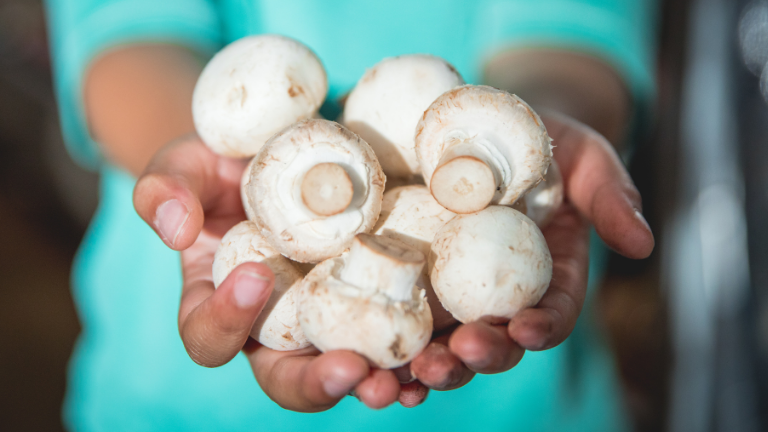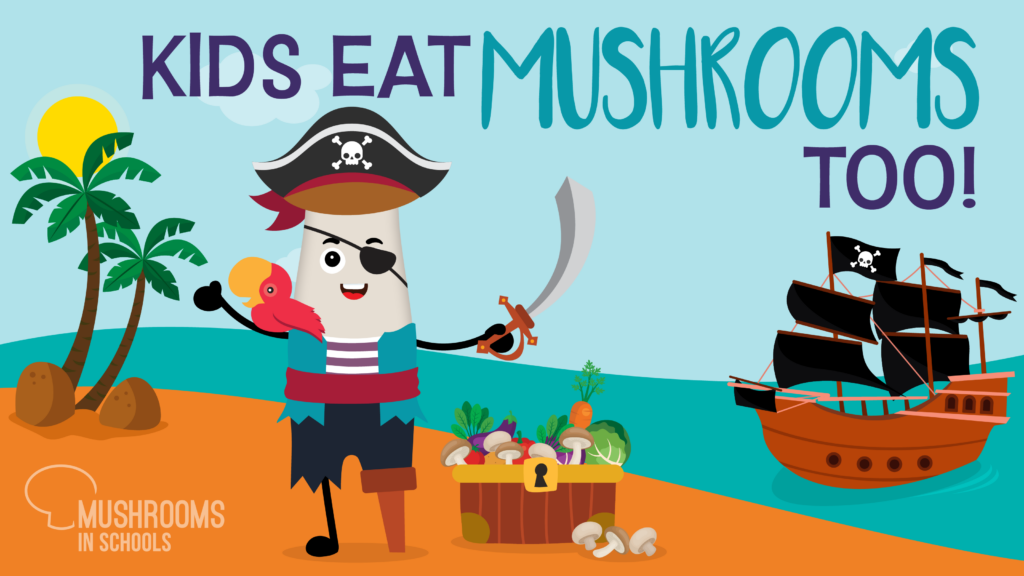 Schools
Schools
The Importance of Knife Skills for Your School Nutrition Program
Knife skills are absolutely critical for the school nutrition professional. There never seems to be enough time for culinary training, but we all know that training is an important investment to ensure that staff stay safe while serving up delicious school meals. That is why we developed our Layers of Flavors Course – which is approved for 1 CEU by SNA! In the course we cover many important topics relevant to school nutrition, including knife skills.
It can be intimidating at first to add fresh mushrooms – or really any fresh produce – to your school meal ingredients, especially if you’re unsure of how to quickly, safely, and deliciously prepare them. Read on to learn more about the importance of knife skills and how to use knife skills to serve fresh mushrooms.
The Importance of Knife Maintenance
Remember to sharpen your knives!
Using a knife safely begins prior to using it to cut food. A dull knife is more dangerous than a sharp knife. Dull knives make it harder to cut through food leading to less control, and this poses an injury risk.
Do your staff have access to a knife sharpener and are they trained on how to use it properly? There are many kinds of knife sharpeners on the market. Whatever kind of knife sharpener you have, make sure to train your staff on how to use the knife sharpener and practice! Many knife sharpener manufacturers feature videos online demonstrating proper knife sharpening technique.
Maintaining sharp knives has a secondary benefit – it will help your staff cut food with precision. Dull knives can lead to imprecise cuts and portions which may lead to food waste that costs your program money.
Knife Types for Cutting Mushrooms
Depending on how you are using mushrooms in your school meals, you may want to use a particular kind of knife. Chef Robert recommends the chef knife and paring knife for cutting mushrooms.
- The Chef Knife is also known as the cooks knife and is a standard cutting tool in the kitchen. It has a long-blade with a curved edge that is perfect for dicing, mincing, slicing and chopping. It was originally designed to slice large cuts of meat, but now it is a go-to utility knife with many uses.
- The Paring Knife is a smaller, short-bladed knife with a narrow blade that tapers to a point. The small-blade is ideal for detailed cuts, such as peeling, trimming, and coring.
Now to Cut Your Mushrooms!
The type of cut you apply to the mushrooms will depend on your recipe. Slicing mushrooms is great for sandwiches, pizza, salads and garnishes. If you are using mushrooms in a hot pasta or mixed dish, your recipe may call for a diced mushroom. Finely chopped mushrooms are great to blend for use in meatballs or as taco meat.
Techniques to ensure safety while cutting mushrooms
Cutting round food is a safety hazard. The first step to cutting a round food is to create a flat surface. This ensures the food is stable and won’t roll around! One easy way to create a flat surface on a mushroom is to de-stem them. Don’t throw these stems away! Trim off any dry or bruised ends of the stem, and use them in your entree to increase yield per pound AND add flavor.
Want to learn more? Chef Robert with Mushrooms in Schools guides you through more mushroom cuts at the video below. This video is part of the Layers of Flavors Course which is approved for 1 CEU by SNA!


 Exploring Mushrooms
Exploring Mushrooms 




We collect, use and process your data according to our Privacy Policy.